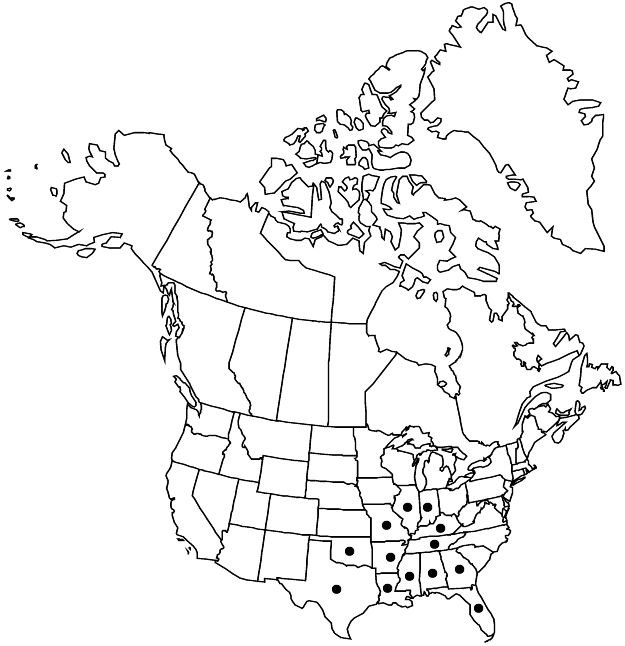Difference between revisions of "Vitis palmata"
Symb. Bot. 3: 42. 1794.
FNA>Volume Importer |
imported>Volume Importer |
||
| Line 55: | Line 55: | ||
|publication year=1794 | |publication year=1794 | ||
|special status=Endemic | |special status=Endemic | ||
| − | |source xml=https:// | + | |source xml=https://bibilujan@bitbucket.org/aafc-mbb/fna-data-curation.git/src/bb6b7e3a7de7d3b7888a1ad48c7fd8f5c722d8d6/coarse_grained_fna_xml/V12/V12_289.xml |
|genus=Vitis | |genus=Vitis | ||
|subgenus=Vitis subg. Vitis | |subgenus=Vitis subg. Vitis | ||
Revision as of 20:08, 27 May 2020
Plants high climbing, sparsely branched. Branches: bark exfoliating in shreds; nodal diaphragms 2.5–4 mm thick; branchlets uniformly red, purplish red, or chestnut, subterete, glabrous or very sparsely arachnoid, growing tips not enveloped by unfolding leaves; tendrils red-pigmented when young, along length of branchlets, persistent, branched, tendrils (or inflorescences) at only 2 consecutive nodes; nodes not red-banded. Leaves: stipules 1.5–3 mm; petiole somewhat shorter than blade; blade usually cordate, 8–14 cm, usually deeply 3(–5)-lobed, apex long acuminate, abaxial surface not glaucous, glabrous, visible, veins and vein axils sometimes hirtellous, adaxial surface glabrous. Inflorescences 6–18 cm. Flowers functionally unisexual. Berries bluish black to black, slightly or not glaucous, globose, 8–10 mm diam., skin separating from pulp; lenticels absent. 2n = 38.
Phenology: Flowering mid Jun–early Jul; fruiting Aug–Oct.
Habitat: Riverbanks, sloughs, alluvial floodplain woodlands.
Elevation: 0–200 m.
Distribution

Ala., Ark., Fla., Ga., Ill., Ind., Ky., La., Miss., Mo., Okla., Tenn., Tex.
Discussion
Reports of Vitis palmata from Virginia (for example, in A. S. Weakley et al. 2012) appear to be based on misidentified material of V. vulpina with somewhat lobed leaves.
Selected References
None.